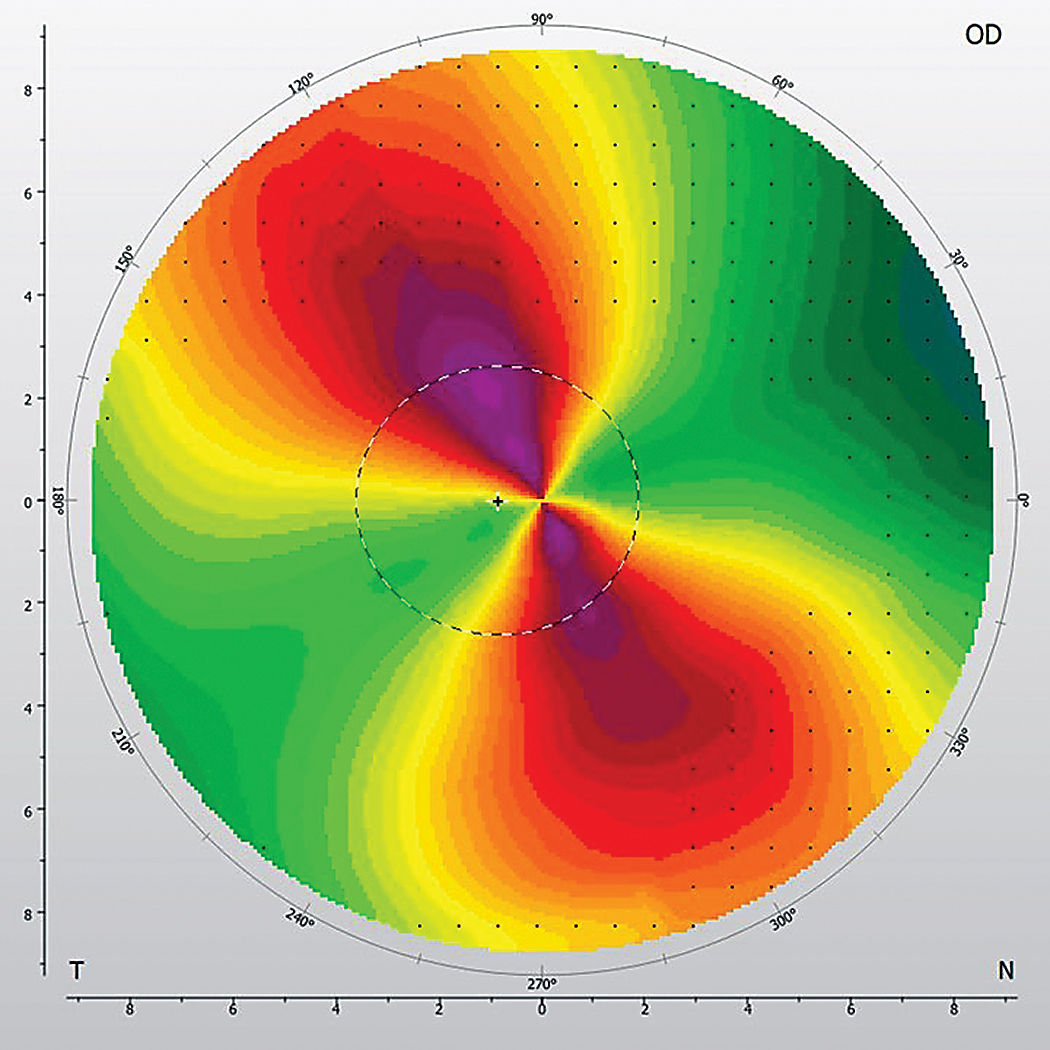 |
| Oblique astigmatism was found to increase with age, and researchers suggest it should be fully corrected or overcorrected at the time of surgery to counteract its probable progression. Photo: Cory Collier, OD. Click image to enlarge. |
It’s been reported that about 10% to 20% of corneas have oblique astigmatism, but few studies have delved into the condition’s particulars. Researchers recently examined this characteristic to report on its incidences and characteristics. Their study revealed that the incidence of oblique astigmatism was greater in the temporal side meridian and increased with age.
The researchers performed videokeratographic examinations on 1,000 eyes of 1,000 patients who had oblique corneal astigmatism. They classified eyes into four meridian categories: 31° to 45°, 46° to 59°, 121° to 135° and 136° to 149°. Astigmatism characteristics were compared among the four groups and further broken down by age, sex and eye side.
The researchers reported that the incidences of the four meridian categories were similar. No significant differences were observed among age groups or between sexes. They noted that oblique astigmatism incidence was significantly higher in eyes in meridian categories one and two in the left eye and categories three and four in the right eye. Incidence was also significantly greater in 40- to 50-year-old men and in 70- to 80-year-old women.
The researchers added that several factors increased significantly with age, including mean regular astigmatism, asymmetry, higher-order irregularity components, Rx and absolute Ry. However, mean regular and irregular astigmatism and absolute Rx and Ry didn’t differ significantly between the four meridian categories, sexes or eyes.
“These findings are clinically relevant when performing correction of preexisting oblique astigmatism at the time of cataract surgery, including the use of a toric intraocular lens or limbal relaxing incisions,” the researchers explained in their paper. “For example, on the basis of the findings of the present study, preexisting oblique astigmatism should be fully corrected or overcorrected because the oblique astigmatism may increase again after surgery.” They noted that longitudinal changes of oblique astigmatism in patients weren’t examined in this study.
Kayashi K, Uno K, Manabe S, et al. Prevalence and characteristics of oblique astigmatism. Eye (Lond). March 16, 2023. [Epub ahead of print]. |


